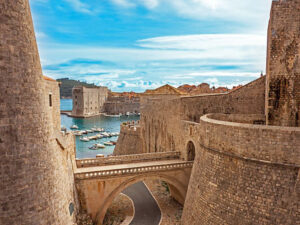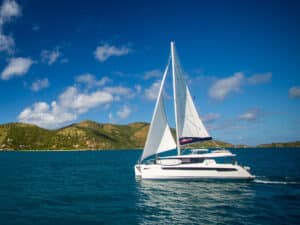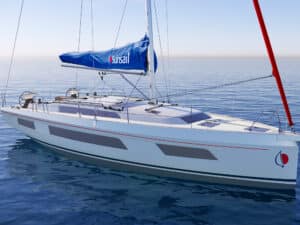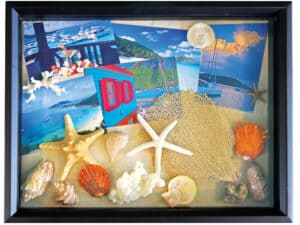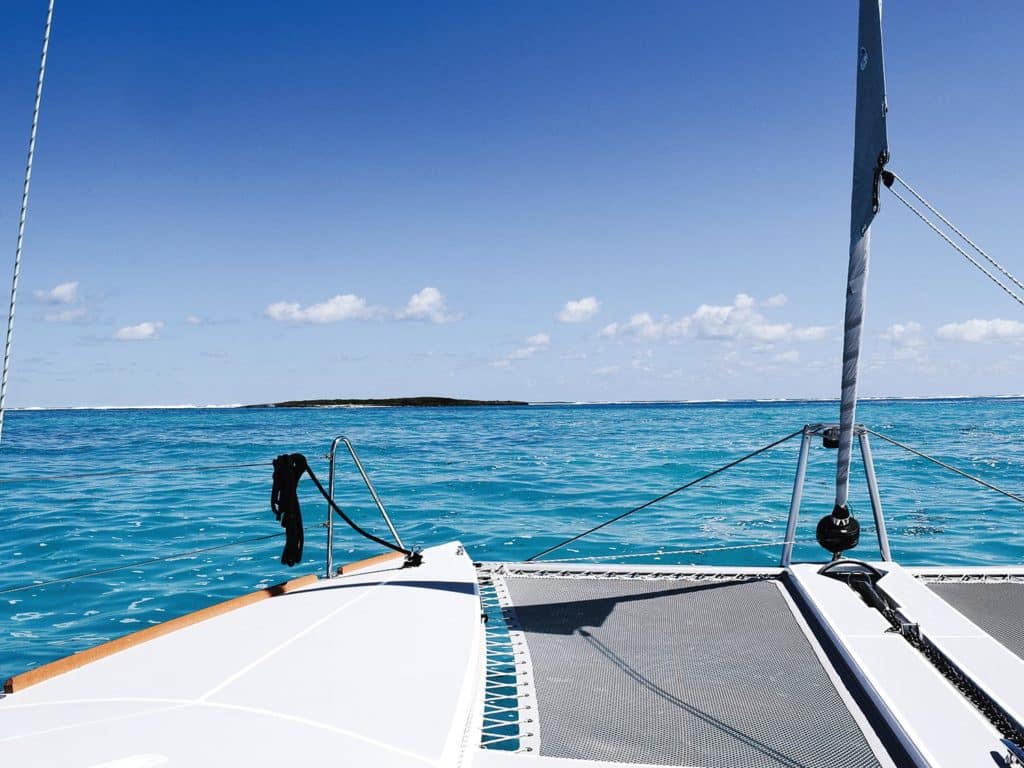
It was Kate’s first conch salad in Marsh Harbour that set her inner clock to Bahamas time—onions, bell peppers, tomatoes, oranges, limes. That, plus Terrance at his outdoor Top Gun food stand keeping up a steady patter, telling us about his favorite local fishing spots and seeming not to notice the blurring machete in his hand as it diced the vegetables and scorched the conch in front of us.
“He had his special secret hot sauce, and he put all that citrus in there,” Kate said. “You could just tell he knew what he was doing. Honestly, his conch salad changed me.”
And so, I too was once changed by a conch salad. But that was 35 years ago, when I was 16—two years younger than my daughter Kate is now. My parents had moved my little sister and me aboard a Formosa 41 ketch and enrolled us in correspondence school to sail for a year in the Bahamas. My friend Brian Harris lived aboard with us for six of those months. With three teenage kids in our small cabin, my parents put us all to work, assigning three tasks that rotated by the week: assist in the galley, clean the head and make a daily entry in the ship’s journal.
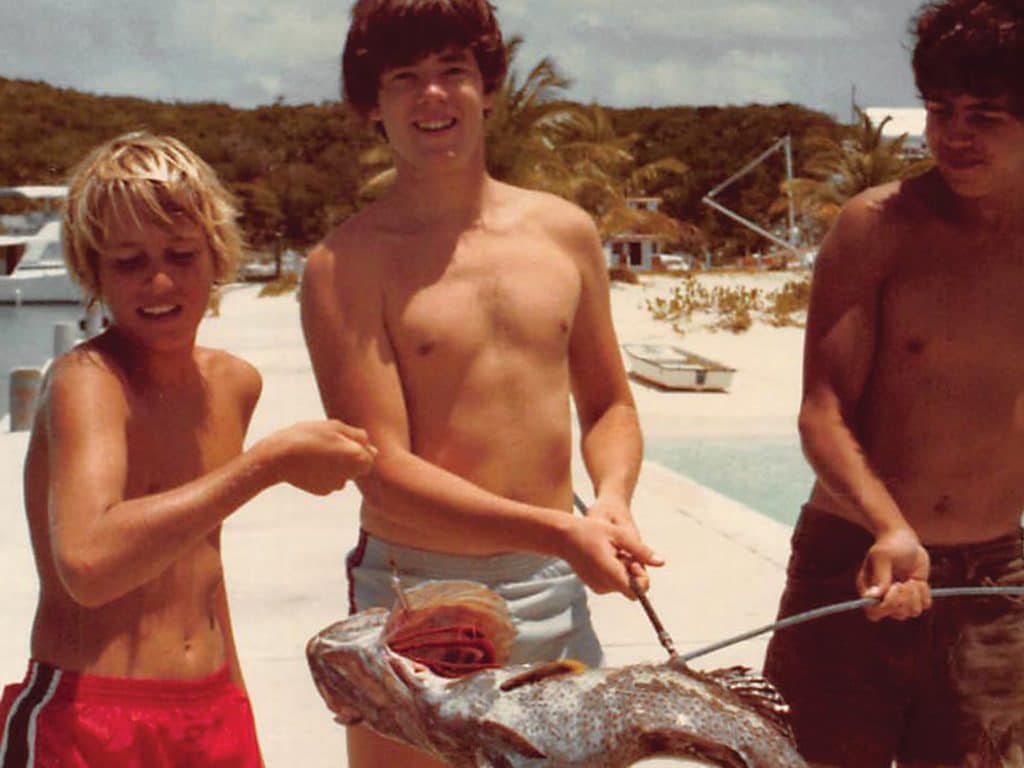
Here’s my entry from February 28, 1983, the first day I ever stepped outside the United States:
After spending yesterday on the hook in a whole gale in the lee of Gun Cay, we were all relieved to tie up at Cat Cay Harbour. This morning was beautiful, though still windy. Brian and I got a tip from a fellow that there were a lot of conch stranded on some sand flats after the tide went out. We walked out onto the flats about 200 yards, knowing full well that the tide was coming in. Of course, we ended up wading ashore where we’d previously walked out. We did find about a half-dozen good-size conch however. We walked back past some of the locals and asked them how to clean conch. A guy named Troy James helped us out. We expected to get complicated instructions, but he took out a large hammer and smashed the shell into crumbs.
Welcome to the Bahamas!
This year, Kate is studying at Florida Southern College in Lakeland, Florida, and it occurred to me she was just one small-plane hop away from the islands we’d so come to love. So together with my parents, Tom and Sue Murphy, I arranged a taste of Bahamas sailing for her and her friend Lizzy Rodriguez during the kids’ freshman-year spring break—as well as a taste for ourselves. In early March 2018, the five of us chartered a Maine Cat 38 from Abacos Multihull Charters in Hope Town.
Breezing Up
March 1, 1983: We are still anchored off Cat Cay this morning. I’d say the wind is sustained around 30 knots and gusting. Too much to weigh anchors anyway. Waves are breaking right over Gun Cay. Maybe tomorrow for Chub Cay.
The weather report for the same week 35 years later was hardly different. On our first day, Barometer Bob’s 0800 forecast over the VHF Abaco Cruisers’ Net gave it to us straight: “Gale-force winds will shift east of the area this morning. Large mixed northerly swells will affect all of the waters east of Florida and the Bahamas through midweek. Another cold front will impact the waters east of Florida tonight and shift east of the area by the end of the week. Gale-force winds are expected east of the front midweek.”
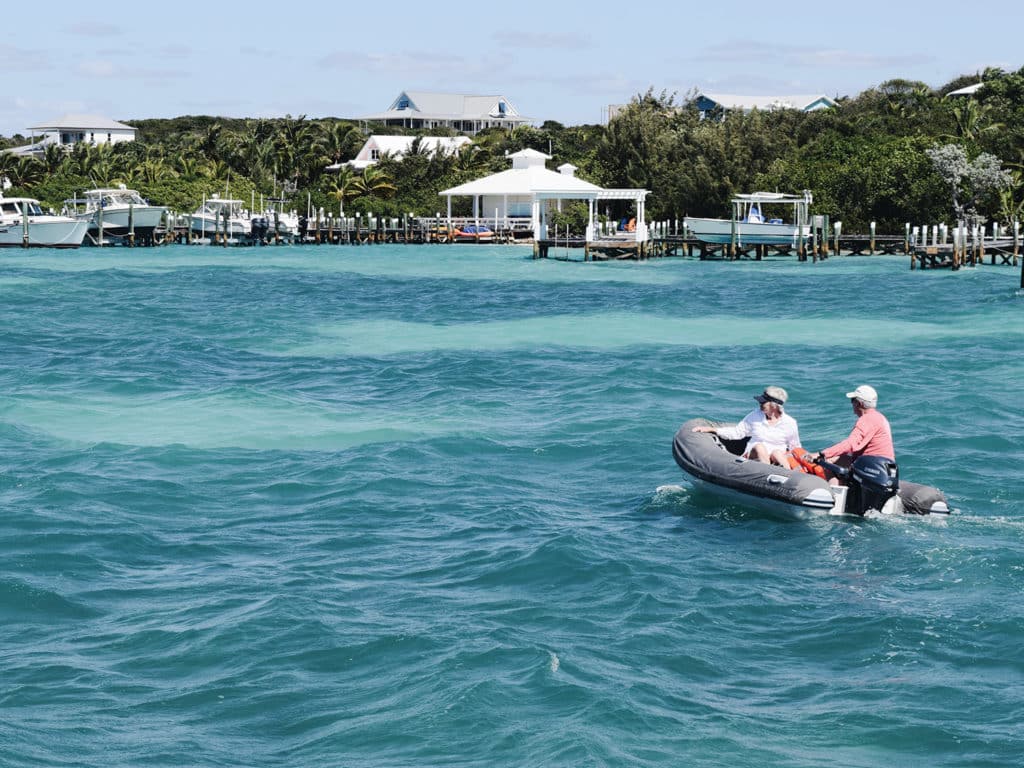
A typical weeklong Abacos charter could take you in either of two directions from Hope Town on Elbow Cay—aptly named, as it marks a clear bend at the intersection of two major Abaco reaches between the big island of Grand Bahama and the cays. One of these reaches extends northwest for about 20 miles to Green Turtle Cay, including all the pleasures of Man-O-War, Scotland, Great Guana, Whale, Treasure and No Name cays. The second carries you south about 12 miles as the kittiwake flies to Little Harbour, home of Pete’s Pub—though several shoals along the way send you zigzagging east and west across the Sea of Abaco to get there.
During our week we might have enjoyed the Sunday pig roast at Nippers Bar or the 7-mile-long beach on Great Guana, or a look at the Albury family’s boatbuilding operation on Man-O-War, or the beach at Treasure Cay that’s rated among National Geographic’s top 10 in the world. But not this week. While the winds were no longer blowing at gale force, still the seas beyond the cays were monstrous—“rages” they call them inside the cuts between the cays. A named winter storm off New England had been sending swells of 20 feet and higher from the north, and the diminishing southeasterly was blowing across them. On our arrival in Marsh Harbour, we’d noticed empty produce and dairy shelves at Maxwell’s Supermarket, and come to find out, none of the mail boats or island freighters that supply the outer islands had been allowed to leave their docks in Nassau all week. The seas outside were just too big.
The view of this scene from Hope Town’s Harbor Lodge, high atop Elbow Cay, was stunning, with the Atlantic spread before us and exploding vertically at the craggy shore. “We don’t see an ocean like this except in hurricanes,” said the bartender.
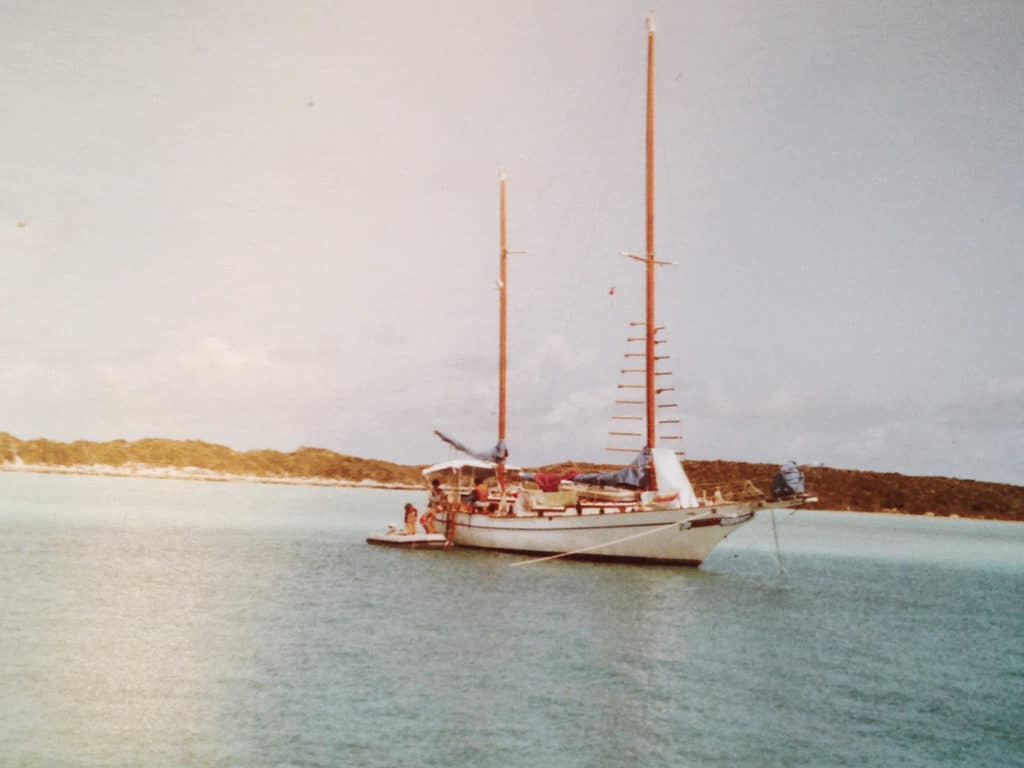
The good news for us? The forecast called for zero percent chance of precipitation all week except at the edge of the cold front. And the Sea of Abaco offers a world of good sailing—and good living—behind the protection of the cays.
What sailing! The Maine Cat 38 we chartered for the week could hardly be more different from the scrolled-teak, clipper-bowed 35,000-pound Taiwanese ketch that brought our family to the Bahamas all those years before. By contrast, Tamarack, hull number four of the Maine Cat 38 series, is a daggerboard cat whose 12,000-pound displacement carries more than a thousand square feet of sail area. Boards up, she draws less than 3 feet. My parents and I reminisced about entire nights we spent aground on the Bahamas banks with our ketch’s 6 1/2-foot draft.
The sailing conditions for the week of our charter—which, by the way, kept most boats anchored or moored all week—were an ideal showcase for this stiff, light-displacement catamaran. At our chart briefing, the base manager recommended that we carry full sail up to 20 knots of true wind, tuck in the second reef at 25 knots and stop sailing at 30. For most of the week, we sailed with either one or two reefs, and we may have just pushed the limits of the second reef on one particularly spirited romp. That said, nearly all the sailing we did was in flat water perfectly protected behind the cays. Still, every so often, we’d need to pass near an ocean cut to skirt shoals extending west from the big island. Coming past North Bar Channel on the way from Little Harbor toward Elbow Cay, we raced through some mighty big seas broad on the bow.
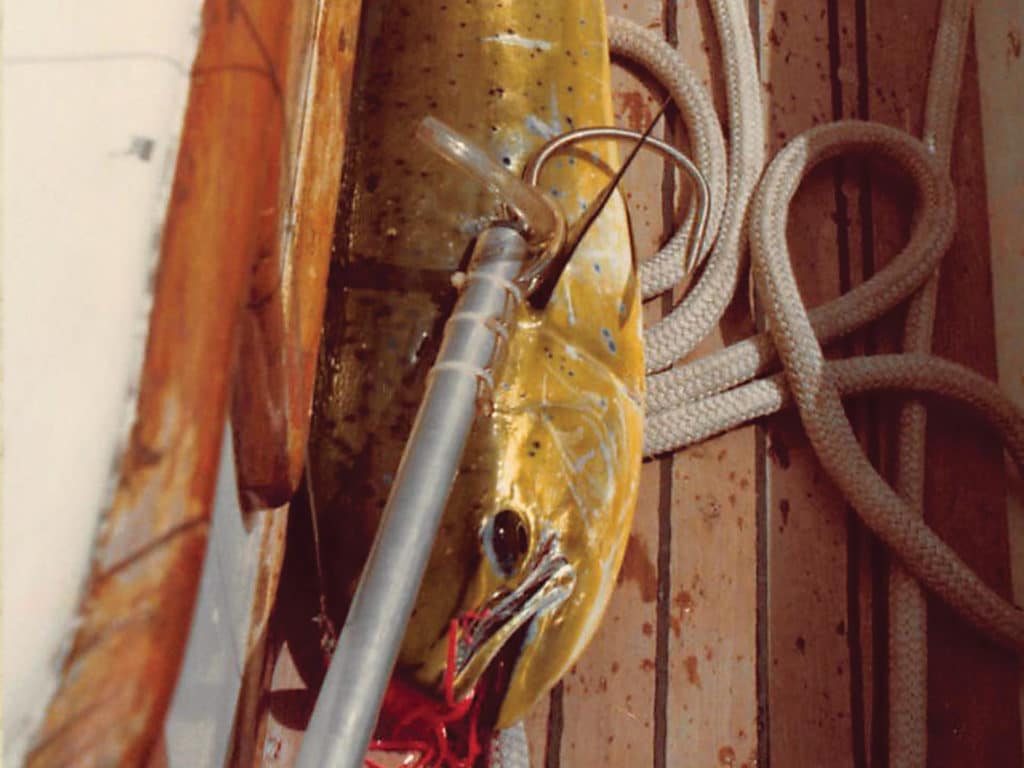
“I don’t expect many people would see a ride a whole lot bigger than that, even going around the world,” my dad said. Since our first Bahamas cruise in 1983, he’s worked as a yacht broker and made hundreds of yacht deliveries in boats of all kinds, power and sail, monohull and multihull. He understands how different boats behave: “Sue and I have been coming to the Abacos for decades, and I have never seen the Sea of Abaco as whitecapped and with the wave sets that we saw today. It was a totally unique situation. We were running at 8 to 10 knots, in 8- to 10-foot seas, and the boat was comfortable, totally comfortable: easy to handle, very light on the helm. It’s an amazing ride.”
For several years in the 1990s, my dad was a U.S. dealer for Prout Catamarans. “The Prout 38 is a classic example,” he said. “It’s a great living boat, with two really great staterooms and a good galley down. It has more creature comfort than the Maine Cat. But I don’t know what that boat would have done in what we had today. I think it would have come to dead stop in some of the stuff we went through.”
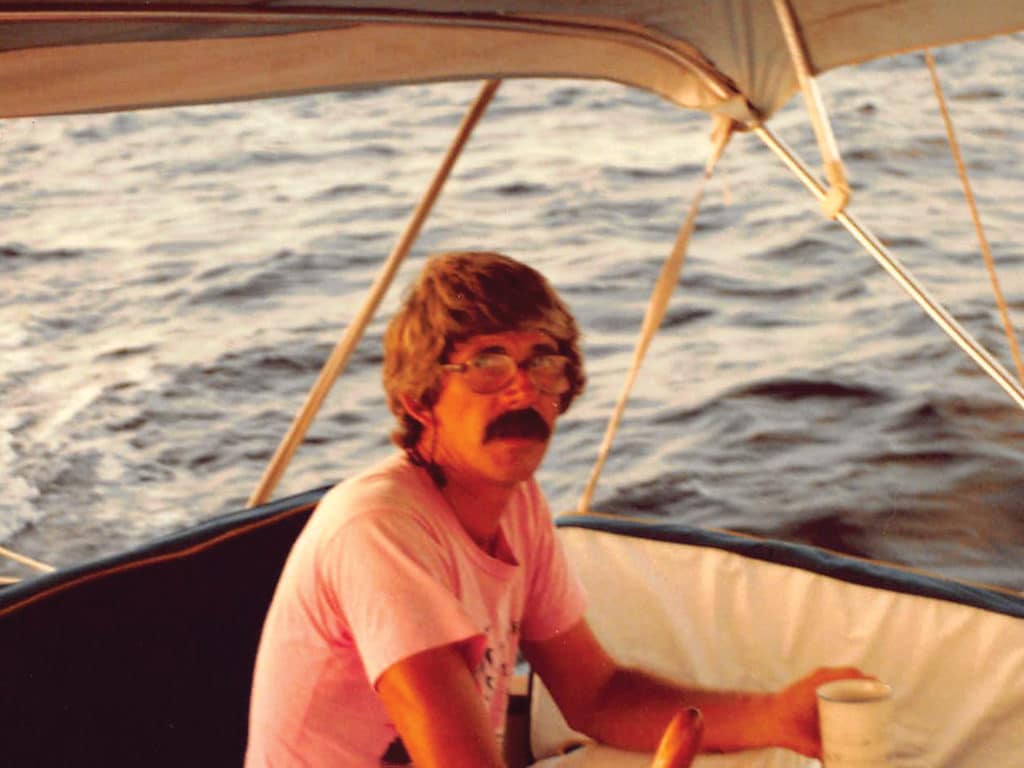
Years of sailing heavy catamarans had taught us to expect several things that never happened in this boat.
“I was watching the waves this morning,” my mom said after our passage past North Bar Channel, “and I was expecting the usual rumble and shudder. And the kind of seas we had today would have done that to almost any boat we’ve been on. But you guys were just walking around and enjoying the morning.”
For my part, I kept expecting the cat’s leeward bow to bury itself under the press of all that horsepower. Yet it never did. Once we were back into flat water I walked forward and lay face-down on the trampoline to watch the bows move through the water. The unmitigated buoyancy felt like joy in motion.
The Kids Are All Right
Of course, cruising, as well as chartering, is about so much more than the sailing. It’s about the life.
Here’s my sister, Monica, age 13, in 1983:
A few days ago while at Hurricane Hole we met these people on a boat called Mary Wanda. (Dad thought at first that they were trying to be “cute” and were really saying mara-juana.) They have a son, Sean, who is my age. We really get along well. Sean is now teaching me how to dive deep and for a long time. He can dive down to 30 feet! Last Tuesday I got to feed a dolphin at the Brittania Hotel! This guy gave me a piece of mackerel and all of a sudden—boom-goom-kabingo—the dolphin leapt out of the water (15 feet) and took my fish. We-e-e-e!!! Well, I have to go hollow out two tomatoes for my parents’ 18th anniversary dinner.
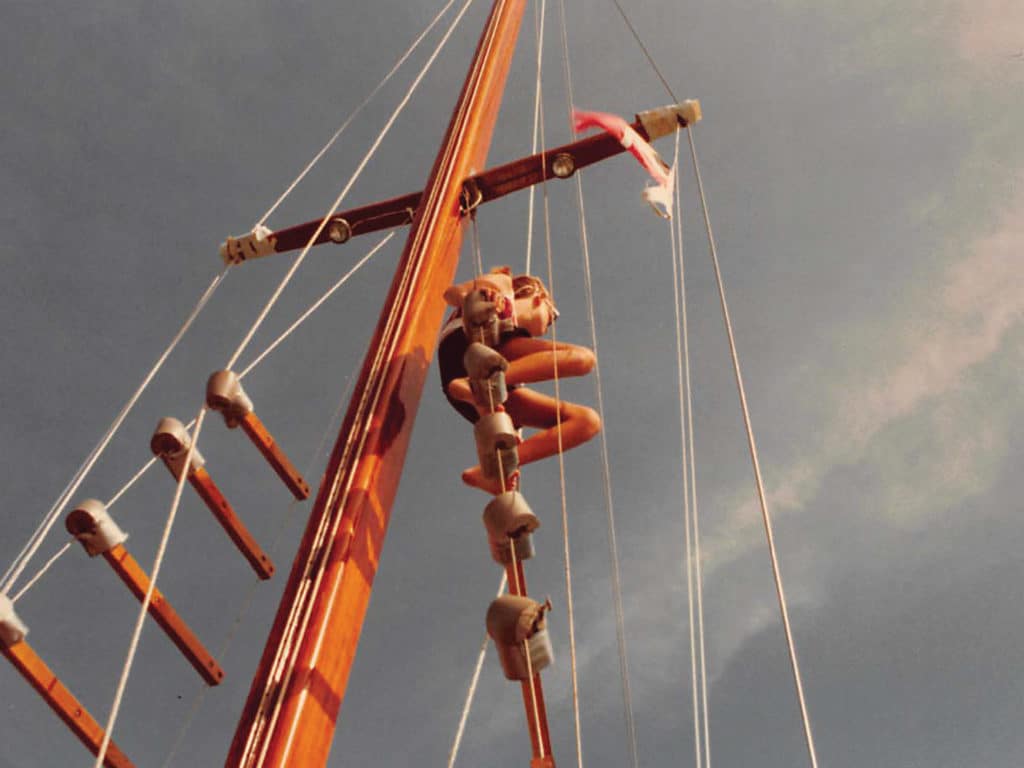
Two days later, Monica wrote this:
Wow, what a day! What a totally wonderful day!! Knowing very well that I was far behind in schoolwork, Mom & I set the 6:00 a.m. alarm clock for two lessons of math. Later, we went a long way to the lee of Long Island, to the most beautiful reefs and coral in the world (I think). Best of all, there were (literally) a million fish to be speared!!! The glasseye fish were so stupid because they think they’re hiding when you’re looking right at them. Sean is so brave! Early in the afternoon, Mary Wanda lost a good spear in a staghorn coral bed, and Sean had to go into a cavelike hole, get the spear and come out feet first! Not to mention the nurse shark and moray that chased Mary Wanda, and an eel that tried to (forcibly) get Sean’s 5-pound snapper!! By the way, I speared 8 out of 9 (Dad speared one) fish. Today is dubbed the best day in the Bahamas!!
For the rest of that spring of 1983, our family cruised the Exumas in company with Mary Wanda, and Sean and Monica grew to become the best spearfishermen among us, inaugurating a whole season of riches: more grouper, more lobster, more conch, less rice. In Cruising World‘s May 1984 issue—before she ever went to high school and seven years before I became a CW staff editor—Monica published a People & Food column in the magazine based on food she’d caught and recipes she’d learned from the folks with whom we traveled.
Alas, for us this year, Kate and Lizzy didn’t have the time or conditions to fully acclimate to snorkeling. They tried it one windy afternoon anchored off Tahiti Beach, but the choppy water made it hard to see—or even to breathe. After one particularly large wave went by, Lizzy came up spluttering. “I like the idea of snorkeling,” she said. “But I feel like I breathe through my nose a lot. With a snorkel you can only breathe through your mouth, so that kind of threw me off.”
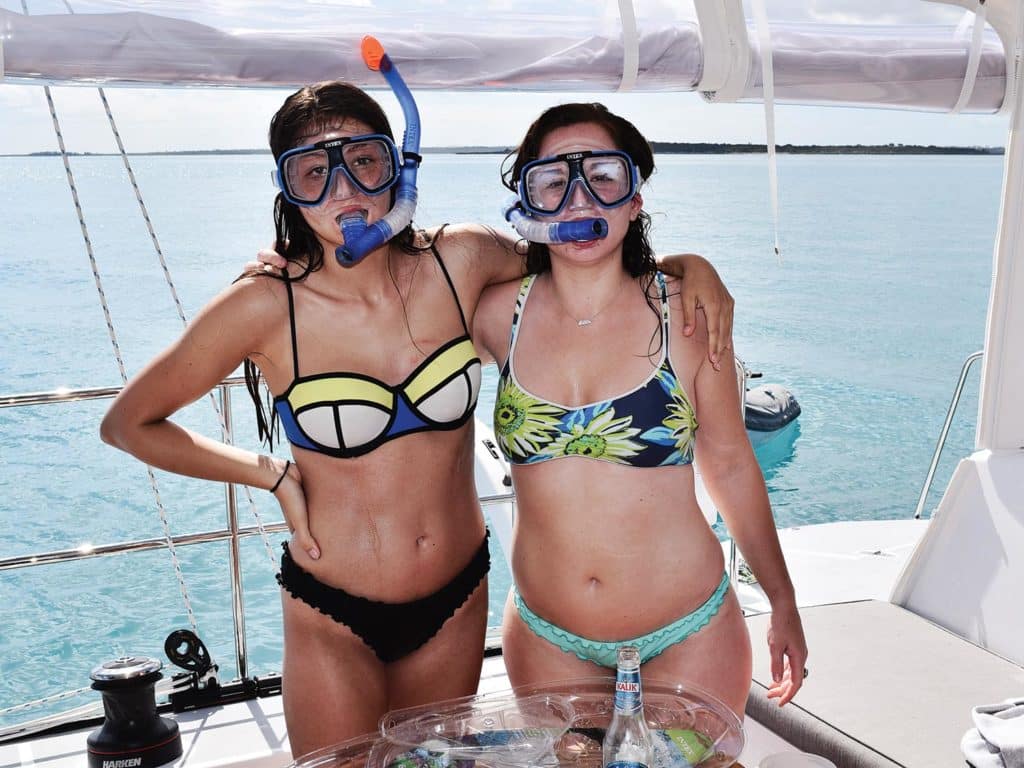
For our pair of newly minted 18-year-olds, some of the standout pleasures were ashore—at Cap’n Jack’s in Hope Town, for example, where Kate enjoyed her first legal cocktail. It didn’t hurt that the television screen behind the bar showed real-time clips from the Northeast. Kate said, “At the bar today, while we were watching the weather reports from places like Worcester, Massachusetts, they were reporting feet of snow. The Jersey shore is flooded. And here we were, just sitting in the bar, watching all these boats around us. It was pretty nice.”
Lizzy experienced a rite of passage at the top of Hope Town’s red-and-white-striped Elbow Reef Lighthouse. Said to be the only manned lighthouse in the Bahamas—and indeed the only active lighthouse in the world powered by man and kerosene—this iconic navigation aid is preserved and restored by the Elbow Reef Lighthouse Society, which accepts tax-deductible donations. Kate and Lizzy climbed to the top of the landmark to take in the view. “We were seeing some major swells from up there,” Kate said. “A sign said we could see 17 miles out, and it was whitecaps all the way.
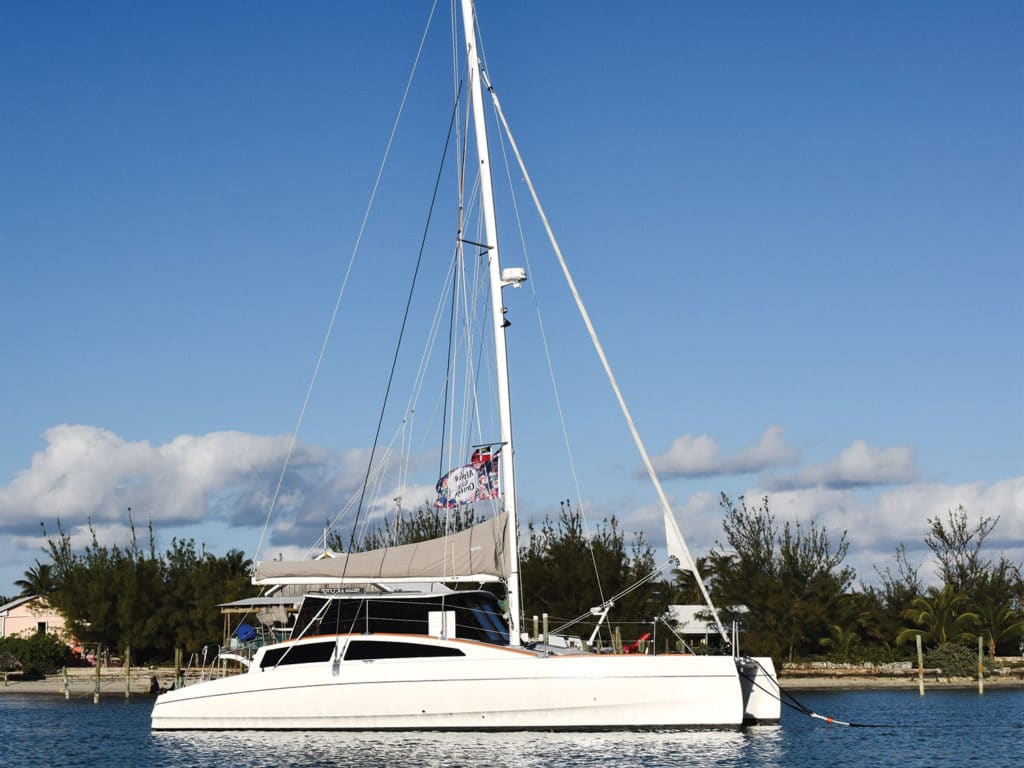
For my mom on this trip, it was walking around Little Harbour that gave the most pleasure. “I loved our evening there so much,” she said, “walking through the sand to Pete’s Pub, and realizing we’re not that many miles from our country.”
Over another round of newly legal cocktails, the girls had an encounter they won’t soon forget. As anyone knows who has visited Pete’s Pub, the bar is fitted with a Bimini Ring—a brass ring of about a 1-inch diameter that hangs from a long string coming down from the ceiling. Affixed to a post is a brass hook. The object, of course, is to stand several paces away from the post and swing the ring and land it on the hook. For most of the duration of a fruity blended drink, the girls tried with zero success to land the ring. Then along comes a man (“some random guy,” in Lizzy’s telling) who says, “I know how to do this.” He screws up his face in a strange contortion, holds the ring to his nose, lets go, then turns around and walks away. “It’s all about mouth,” he says, “and then you’ve got to walk away like you don’t care.” Meanwhile, the ring goes arcing and spinning through the room and lands without a bounce on the hook. Only later did the girls learn who the random guy was.
“It’s Pete!” said Kate. “And he didn’t even look to check if it landed!”
Bahamas Moments, Then and Now
The lobster tails we grilled off Tamarack’s transom were no less tasty, even if this time we bought them from Maxwell’s instead of spearing them ourselves. What’s indisputable is that the conversations we shared across three generations sitting there together in the boat’s sheltered bridge deck, anchored in one idyllic harbor or another. Long, unspooling conversations about Kate’s new life at college and the people she’s sharing it with, or older recollections from our family’s past that Kate had maybe heard before, or maybe she hadn’t—these are the times we’ll remember for many years to come.
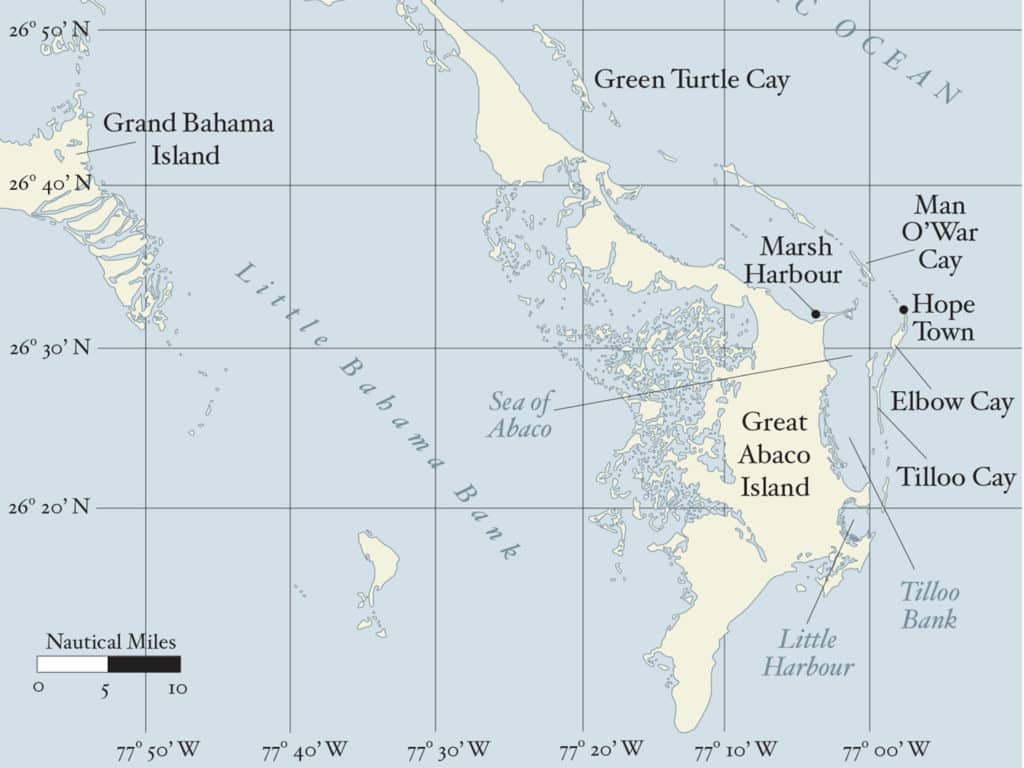
And then more sailing.
An entry I made at age 16 on March 2, 1983, could have easily applied to any of the gentler sailing days of our charter this year.
We had a grand sail across the Great Bahama Bank. At 8 a.m. this morning I was alone on deck with a cool force-4 breeze blowing off our port quarter, sitting in the sun, my feet at the helm, listening to Bob Marley and Jerry Garcia. This must be what heaven is like. The rest of the day was much the same, gliding through a flat turquoise sea at 5 knots. All day Raven and Gunhild were just over the horizon until at sunset we all sailed past the Northwest Channel Light into a hundred fathoms of water together. Unbeatable!
All that were missing from the scene were Raven and Gunhild, two boats I haven’t seen since that long-ago season. But absolutely everything else was just as wonderful as I still remember it, now 35 years on.
Tim Murphy is a CW editor-at-large and longtime Boat of the Year judge. He and Lesley Davison are fitting out a 1988 Passport 40, Billy Pilgrim, at Maine Yacht Center in Portland, Maine.
Abacos Chartering: Getting There, Getting Around
Several charter companies offer Abaco bareboat and crewed charters based in Marsh Harbour: Cruise Abaco, Dream Yacht Charters, Sunsail, The Moorings.
We chartered with Abaco Multihull Charters, a boutique operation based in Hope Town that exclusively charters Maine Cat sailboats: the Maine Cat 30, the Maine Cat 38 and the Maine Cat 41.
The main airport for the Abacos is Leonard M. Thompson International Airport in Marsh Harbour (MHH). JetBlue Airways, American Airlines and Delta Air Lines fly direct from such major U.S. cities as Chicago, Boston, Washington, D.C. and New York. Silver Airways, Bahamasair and a host of charter companies fly there regularly from many Florida airports as well. Abaco Multihull Charters maintains an updated “Getting Here” page that also includes charter flights.
To the Abacos: On Your Own Boat
If you plan to sail your own boat, The Cruising Guide to Abaco Bahamas by Steve Dodge is a local favorite. Together with his wife and sons, Dodge has published annual editions of this guide for the last 30 years. Its charts are based on Dodge’s own hydrographic research, and the guide employs a system of GPS waypoints and safe course lines among the cays for boats of different drafts.
Cruisers who have migrated southbound on the Intracoastal Waterway may also appreciate the familiar layout of the Waterway Guide Bahamas 2019 edition.
Both guides offer sound advice for clearing in, as well as suggestions for crossing the Gulf Stream from Florida’s east coast. The passage from Florida to the Abacos is about 135 miles—55 miles from West Palm Beach to West End on Grand Bahama, then another 80 miles across Little Bahama Bank to the Sea of Abaco. You’ll find official ports of entry at West End, Freeport, Walker’s Cay, Spanish Cay, Green Turtle Cay and Marsh Harbour.
“Do not depart from any point north of Ft. Pierce,” says Steve Dodge, “because you will be fighting the current of the Gulf Stream. Embarkation from West Palm Beach puts the current on the beam, and departure from Ft. Lauderdale gives the boat a boost. The Gulf Stream flows at about 3 knots, but you are not in it all the time that you are crossing. I figure 2 knots drift, and usually that works out about right.” The Waterway Guide publishes a useful table of magnetic courses to several Bahamian destinations for boats leaving from any of six inlets between Miami and West Palm Beach, corrected for boat speeds at several intervals between 5 knots and 20 knots.
For a digest of local information once you arrive, including weather and sea conditions, the half-hour Abacos Cruisers Net broadcasts each morning at 8 a.m. on VHF Channel 16.

